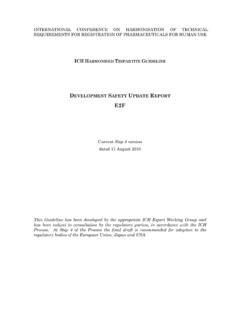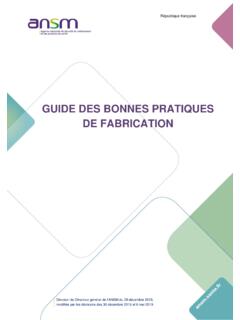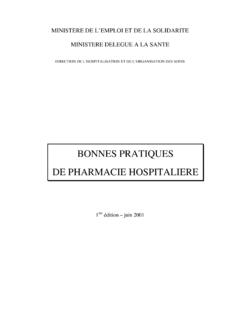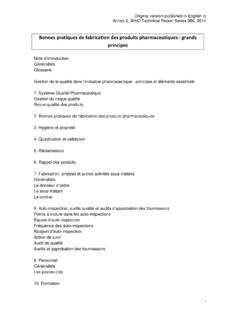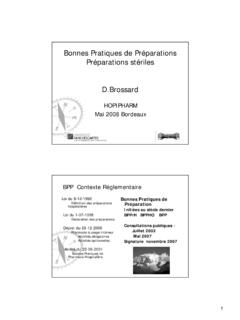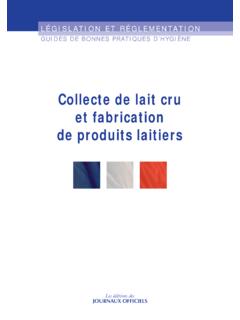Transcription of ICH HARMONISED TRIPARTITE GUIDELINE
1 INTERNATIONAL CONFERENCE ON HARMONISATION OF TECHNICAL REQUIREMENTS FOR REGISTRATION OF PHARMACEUTICALS FOR HUMAN USE ICH HARMONISED TRIPARTITE GUIDELINE GOOD MANUFACTURING PRACTICE GUIDE FOR ACTIVE PHARMACEUTICAL INGREDIENTS Q7 Current Step 4 version dated 10 November 2000 This GUIDELINE has been developed by the appropriate ICH Expert Working Group and has been subject to consultation by the regulatory parties, in accordance with the ICH Process. At Step 4 of the Process the final draft is recommended for adoption to the regulatory bodies of the European Union, Japan and USA.
2 Q7 Document History First Codification History Date New Codification November 2005 Q7A Approval by the Steering Committee under Step 2 and release for public consultation. 19 July 2000 Q7 Current Step 4 version Q7A Approval by the Steering Committee under Step 4 and recommendation for adoption to the three ICH regulatory bodies. 10 November 2000 Q7 GOOD MANUFACTURING PRACTICE GUIDE FOR ACTIVE PHARMACEUTICAL INGREDIENTS ICH HARMONISED TRIPARTITE GUIDELINE Having reached Step 4 of the ICH Process at the ICH Steering Committee meeting on 10 November 2000, this GUIDELINE is recommended for adoption to the three regulatory parties to ICH TABLE OF CONTENTS 1.
3 1 1 Regulatory 1 1 2. QUALITY 4 4 Responsibilities of the Quality Unit(s).. 4 Responsibility for Production 5 Internal Audits (Self Inspection) .. 5 Product Quality 6 3. 6 Personnel 6 Personnel Hygiene .. 6 7 4. BUILDINGS AND 7 Design and 7 8 8 8 9 Sewage and 9 Sanitation and 9 5. PROCESS 9 Design and 9 Equipment Maintenance and 10 11 Computerized 11 i Good Manufacturing Practice Guide for Active Pharmaceutical Ingredients 6. DOCUMENTATION AND Documentation System and Equipment Cleaning and Use Records of Raw Materials, Intermediates, API Labelling and Packaging Master Production Instructions (Master Production and Control Records).
4 13 Batch Production Records (Batch Production and Control Records)..14 Laboratory Control Batch Production Record 7. MATERIALS General Receipt and Sampling and Testing of Incoming Production 8. PRODUCTION AND IN-PROCESS Production Time Limits ..18 In-process Sampling and Blending Batches of Intermediates or APIs ..19 Contamination Control ..20 9. PACKAGING AND IDENTIFICATION LABELLING OF APIS AND Packaging Label Issuance and Packaging and Labelling 10. STORAGE AND Warehousing Procedures.
5 22 Distribution 11. LABORATORY General Testing of Intermediates and APIs ..23 Validation of Analytical Procedures - see Section Certificates of Stability Monitoring of Expiry and Retest ii Good Manufacturing Practice Guide for Active Pharmaceutical Ingredients Reserve/Retention 25 12. 25 Validation 25 Validation Documentation .. 26 Qualification .. 26 Approaches to Process 26 Process Validation 27 Periodic Review of Validated 27 Cleaning 28 Validation of Analytical Methods.
6 28 13. CHANGE 29 14. REJECTION AND RE-USE OF 29 29 29 30 Recovery of Materials and 30 31 15. COMPLAINTS AND 31 16. CONTRACT MANUFACTURERS (INCLUDING LABORATORIES).. 31 17. AGENTS, BROKERS, TRADERS, DISTRIBUTORS, REPACKERS, AND 32 32 Traceability of Distributed APIs and 32 Quality 33 Repackaging, Relabelling and Holding of APIs and 33 33 Transfer of Information .. 33 Handling of Complaints and 33 Handling of 34 18. SPECIFIC GUIDANCE FOR APIS MANUFACTURED BY CELL 34 34 Cell Bank Maintenance and Record Keeping.
7 35 Cell 35 Harvesting, Isolation and 36 Viral Removal/Inactivation 36 iiiGood Manufacturing Practice Guide for Active Pharmaceutical Ingredients 19. APIS FOR USE IN CLINICAL Equipment and Control of Raw Changes ..38 Laboratory 20. iv GOOD MANUFACTURING PRACTICE GUIDE FOR ACTIVE PHARMACEUTICAL INGREDIENTS 1. INTRODUCTION Objective This document (Guide) is intended to provide guidance regarding good manufacturing practice (GMP) for the manufacturing of active pharmaceutical ingredients (APIs) under an appropriate system for managing quality.
8 It is also intended to help ensure that APIs meet the requirements for quality and purity that they purport or are represented to possess. In this Guide manufacturing is defined to include all operations of receipt of materials, production, packaging, repackaging, labelling, relabelling, quality control, release, storage and distribution of APIs and the related controls. In this Guide the term should indicates recommendations that are expected to apply unless shown to be inapplicable or replaced by an alternative demonstrated to provide at least an equivalent level of quality assurance.
9 For the purposes of this Guide, the terms current good manufacturing practices and good manufacturing practices are equivalent. The Guide as a whole does not cover safety aspects for the personnel engaged in the manufacture, nor aspects of protection of the environment. These controls are inherent responsibilities of the manufacturer and are governed by national laws. This Guide is not intended to define registration/filing requirements or modify pharmacopoeial requirements.
10 This Guide does not affect the ability of the responsible regulatory agency to establish specific registration/filing requirements regarding APIs within the context of marketing/manufacturing authorizations or drug applications. All commitments in registration/filing documents must be met. Regulatory Applicability Within the world community, materials may vary as to the legal classification as an API. When a material is classified as an API in the region or country in which it is manufactured or used in a drug product, it should be manufactured according to this Guide.
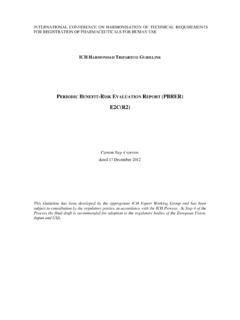
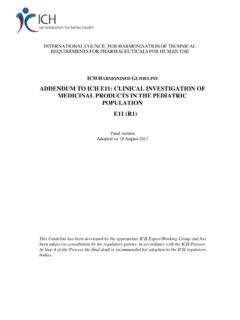
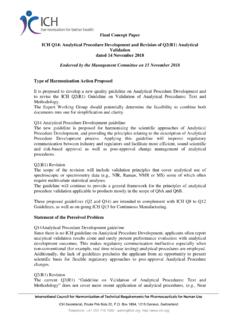
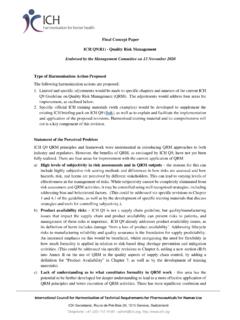
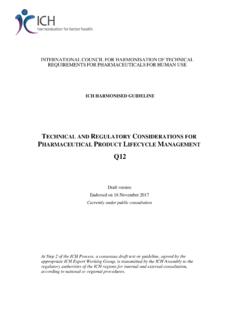
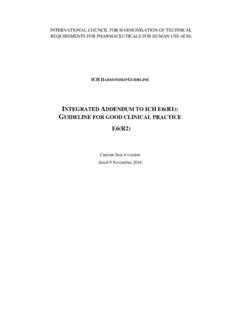
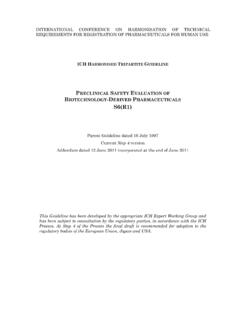
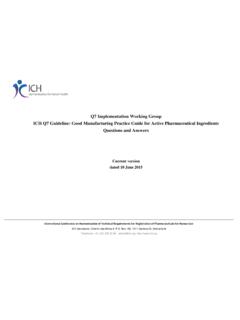
![[ICH E2F] [EXAMPLE DSUR – PHASE III INVESTIGATIONAL …](/cache/preview/e/7/a/2/e/6/3/0/thumb-e7a2e63043c4463724e748eb98faa3a7.jpg)
